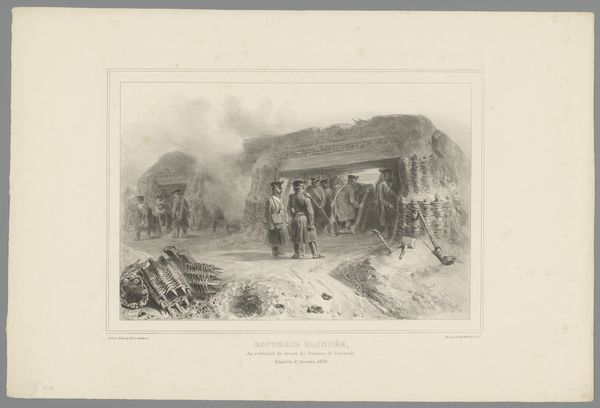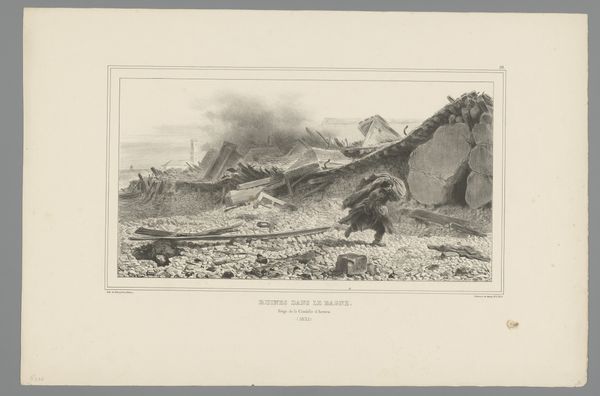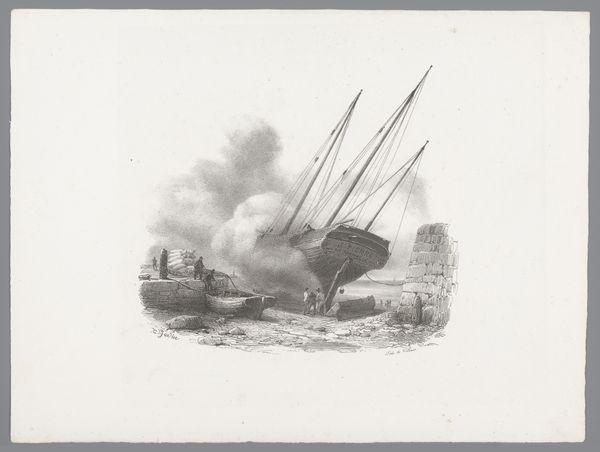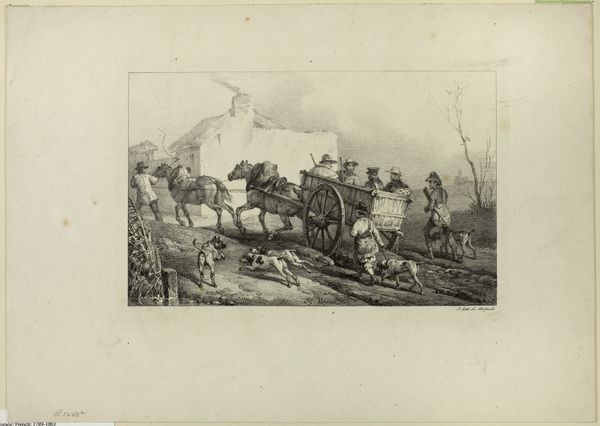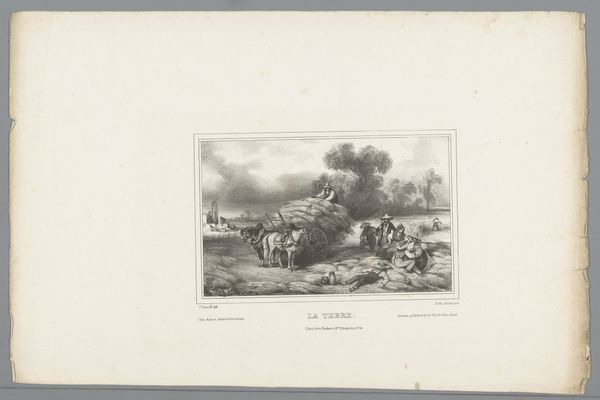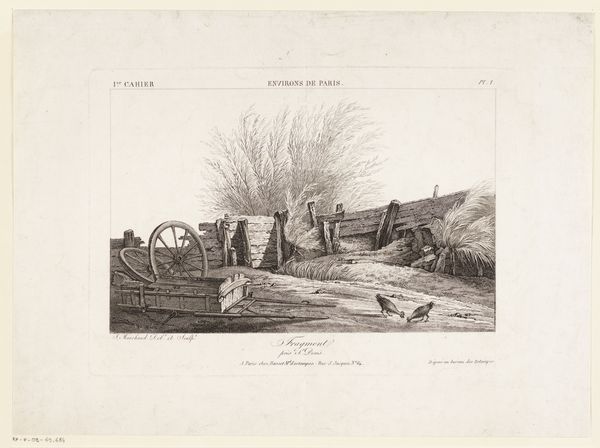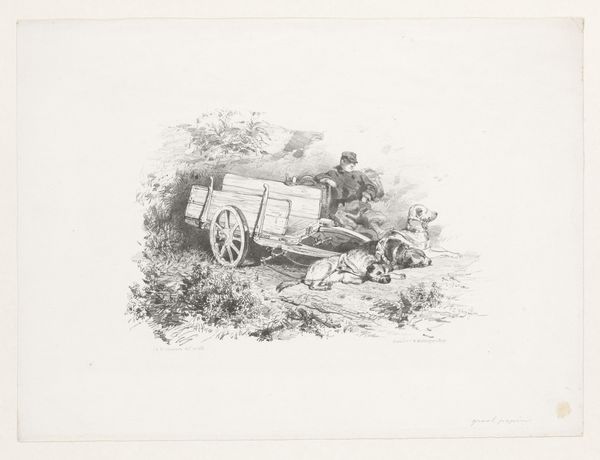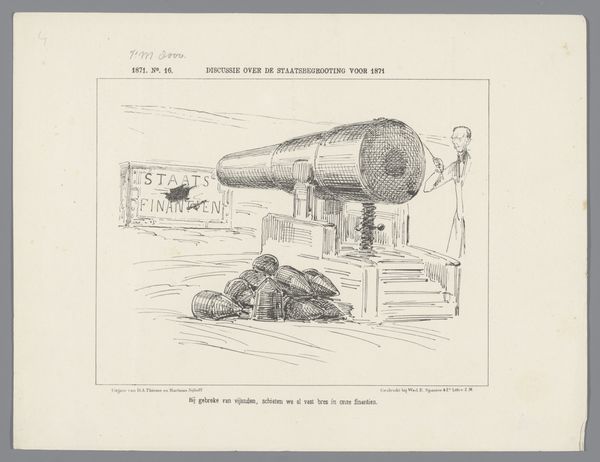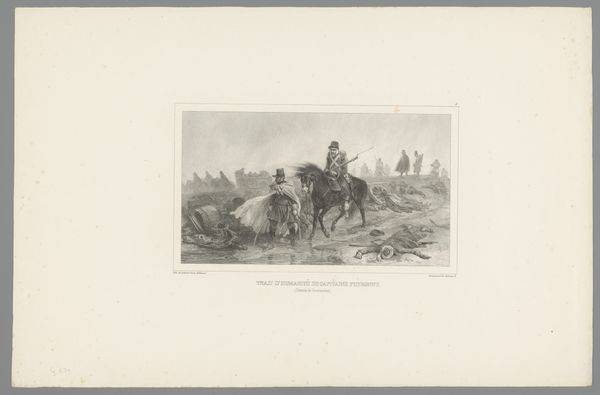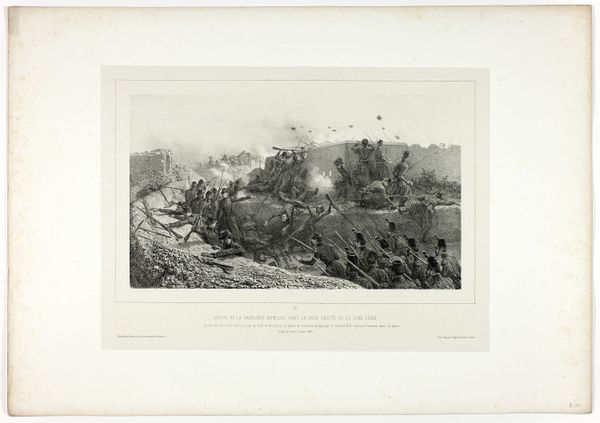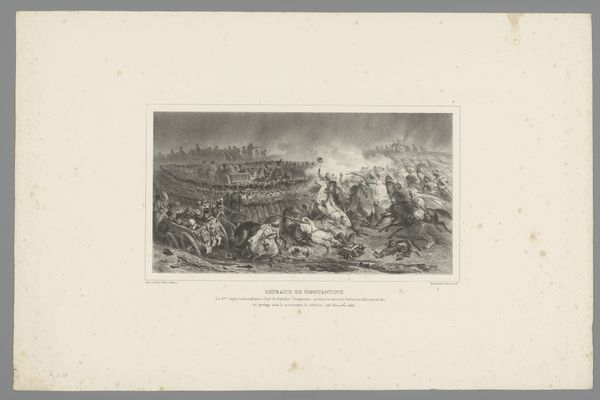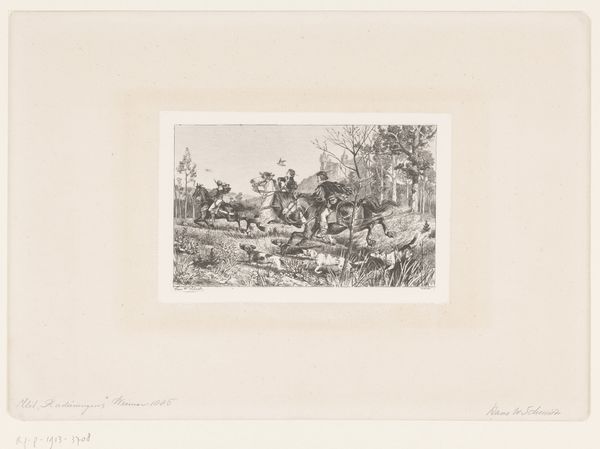
print, engraving
# print
#
landscape
#
romanticism
#
history-painting
#
engraving
Dimensions: height 365 mm, width 553 mm
Copyright: Rijks Museum: Open Domain
Auguste Raffet’s 1832 lithograph captures a scene of artillery in action. Dominating the foreground, the cannon and its ammunition symbolize raw power and technological advancement, reflective of the era's shifting dynamics. Yet, these symbols of progress are intertwined with ancient themes of destruction and dominance, echoing motifs found in classical depictions of war. Consider the pyramid of cannonballs, a dark inversion of the classical pyramid, typically associated with harmony and order. Here, it becomes a stark reminder of the chaos of war, a visual echo of sacrificial piles from antiquity, symbolizing collective suffering. The cannon itself, a phallic symbol of aggression, appears throughout history, from ancient siege weaponry to modern arms, its form evolving but its psychological impact unchanging. The depiction of soldiers bracing for impact conveys a primal, visceral tension, a motif that resonates across cultures, embodying the eternal struggle between humanity and the brutal realities of conflict. These resurfaced symbols take on new meanings, capturing the cyclical nature of history.
Comments
No comments
Be the first to comment and join the conversation on the ultimate creative platform.
